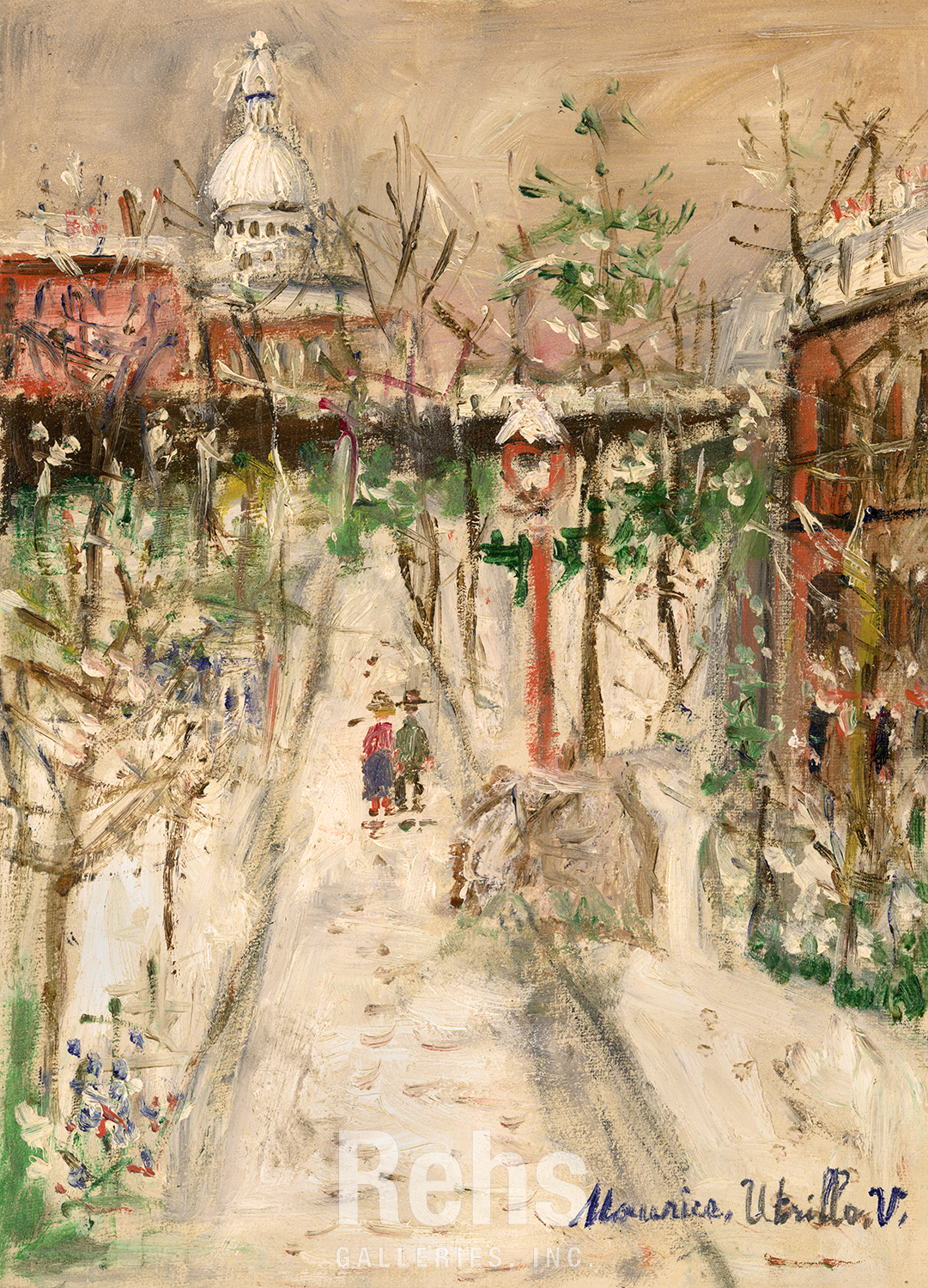BIOGRAPHY - Maurice Utrillo (1883 - 1955)
A French painter best known for his poetic depictions of Montmartre and other Parisian cityscapes. Born in the Montmartre district of Paris, Utrillo was the son of the artist Suzanne Valadon, who had been a model for prominent painters such as Renoir and Toulouse-Lautrec before becoming a painter herself. The identity of his father remains uncertain, though the Spanish artist Miguel Utrillo acknowledged paternity.
Utrillo’s early life was turbulent. He struggled with mental illness and alcoholism from a young age, spending time in asylums. To provide him with a calming and productive outlet, his mother encouraged him to take up painting. Utrillo proved to be a natural talent, developing a distinctive style that blended realism with Impressionistic light and color. His most acclaimed works were painted during his “white period” (circa 1909–1914), characterized by a pale palette and textured surfaces made with plaster and other materials mixed into his paint.
He became widely known for his quiet, atmospheric street scenes—churches, cafes, houses, and alleys rendered with a haunting stillness. Montmartre was a frequent subject, but he also painted in other French towns and cities. Though never as innovative as his contemporaries in the avant-garde, Utrillo gained popularity for the emotional resonance of his work and was celebrated in both France and abroad.
Despite his success, Utrillo led a troubled personal life, often struggling with mental instability and addiction. He married Lucie Valore in 1935 and spent his later years in relative seclusion in the south of France. Maurice Utrillo died in 1955 in Dax, France.
Today, Utrillo is remembered as one of the few notable painters of Montmartre born and raised in the district, and his evocative urban landscapes remain cherished contributions to 20th-century French art.
